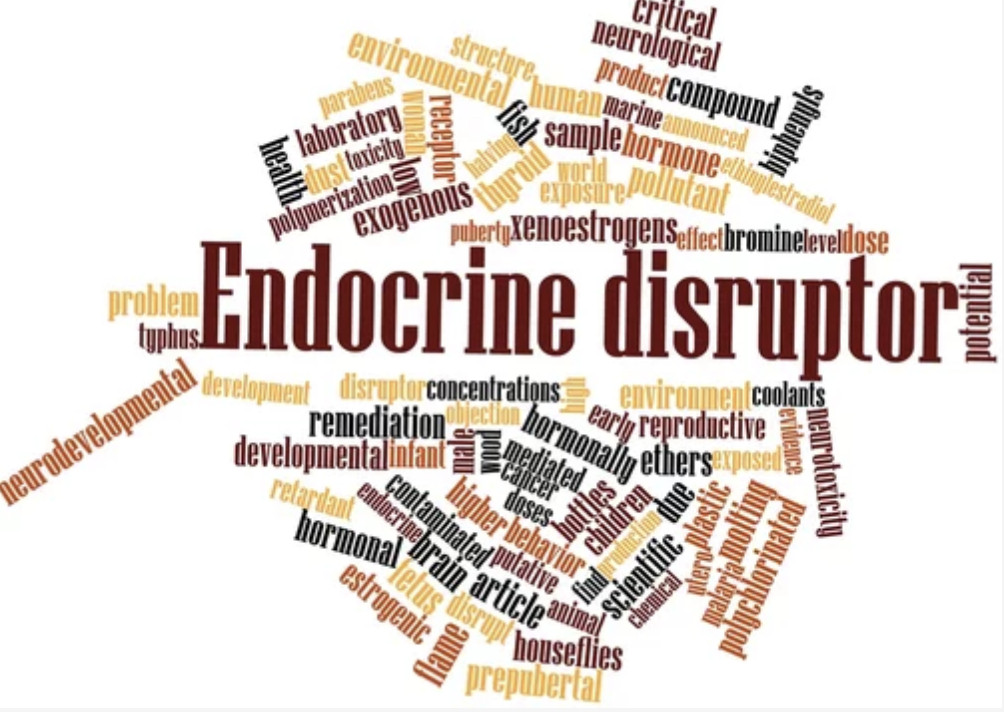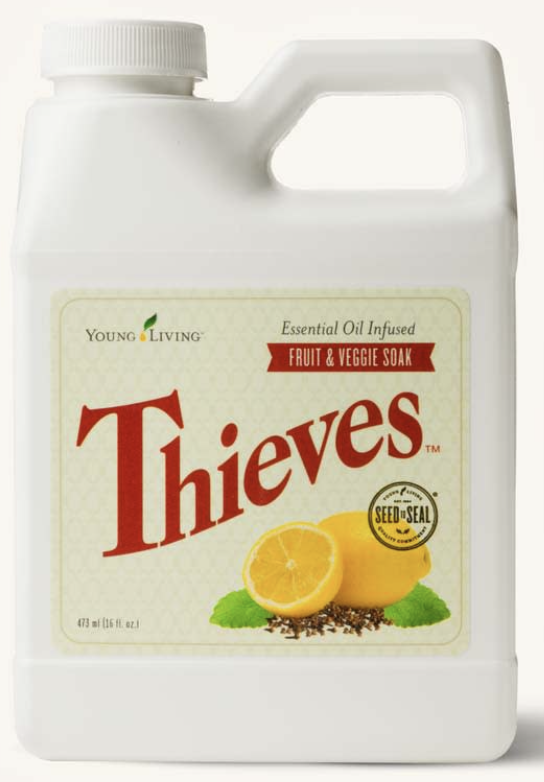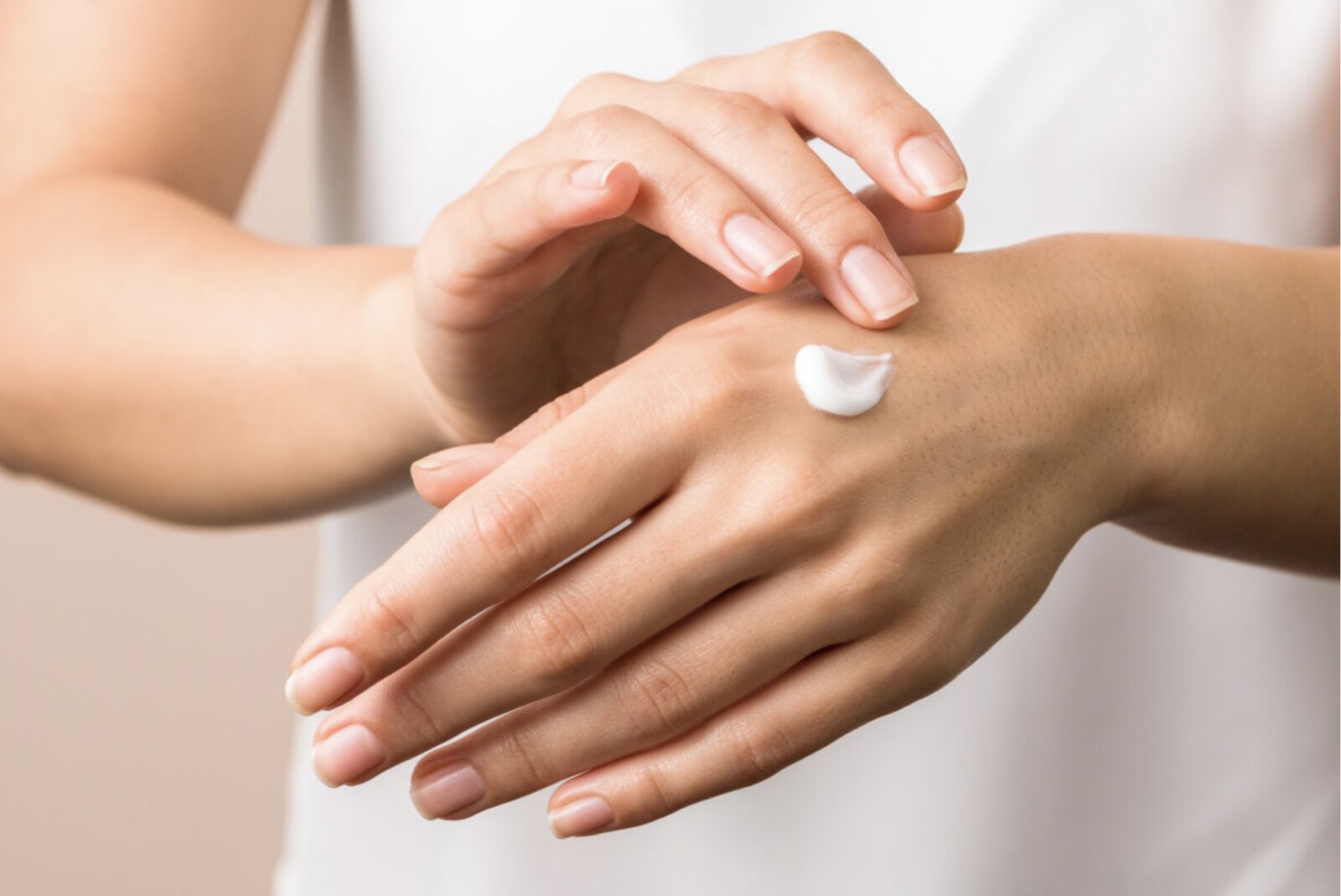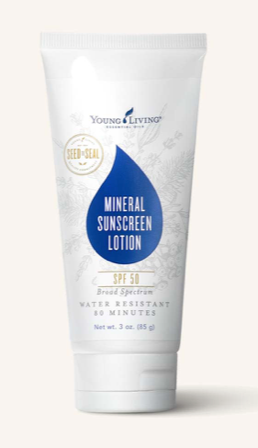
In our modern world, it's hard to escape the influence of chemicals. They are present in our food, personal care products, and even the air we breathe. While some chemicals may be harmless or even beneficial, there is a sinister group among them known as endocrine disruptors. These substances have been silently infiltrating our daily lives, posing a grave threat to our health and well-being. In this blog post, we will explore the world of endocrine disruptors, understand their dangers, and shed light on the measures we can take to protect ourselves.
To comprehend the impact of endocrine disruptors, we first need to understand the endocrine system's role in our bodies. Think of it as an intricate network of messengers, coordinating and regulating various bodily functions. Hormones, produced by different endocrine glands, play a crucial role in this system, governing processes such as growth, metabolism, reproduction, and development. Endocrine disruptors, however, can interfere with these hormonal signals, leading to a myriad of health problems
One of the most alarming aspects of endocrine disruptors is their pervasiveness. They can be found in numerous everyday items such as plastic containers, food packaging, cleaning products, and pesticides. These disruptors can enter our bodies through ingestion, inhalation, or even skin absorption. They then mimic or block the actions of natural hormones, disrupting the delicate balance within our endocrine system.
The consequences of such disruption are far-reaching and affect people of all ages, from infants to the elderly. Studies have linked exposure to endocrine disruptors with a range of health issues, including reproductive disorders, developmental abnormalities, impaired immune function, and increased risk of certain cancers. In particular, pregnant women and children are especially vulnerable, as endocrine disruptors can interfere with fetal development and cause long-lasting effects on their health.
One notorious endocrine disruptor that has received considerable attention is bisphenol A (BPA). This chemical, commonly found in plastic bottles and food containers, has been shown to mimic estrogen, a hormone essential for reproductive health. BPA exposure has been associated with infertility, hormonal imbalances, and even an increased risk of breast and prostate cancer. Although many countries have taken steps to ban or limit its use, BPA is just the tip of the iceberg regarding endocrine disruptors.
Another concerning aspect is the cumulative effect of these disruptors. Even low-level and intermittent exposures can add up over time, leading to a build-up of harmful effects in our bodies. Moreover, the true extent of the dangers posed by endocrine disruptors is still being uncovered. Researchers are constantly discovering new substances and their potential to disrupt hormonal function, raising concerns about the long-term consequences for human health.
Thankfully, there are steps we can take to minimize our exposure and protect ourselves from the dangers of endocrine disruptors. Opting for organic produce, avoiding plastic containers, and choosing personal care products free from harmful chemicals are simple yet effective measures. Additionally, supporting policies that regulate the use of endocrine disruptors and advocating for further research is essential in combating this hidden threat.
Eight Hormone - altering chemicals and how to avoid them!
1. Pesticides
Used for: Discouraging weeds and pests on non-organic crops, preventing fungus, and drying crops to speed the harvesting process.
How they can harm you: Pesticides are associated with an impact on fertility and birth outcomes, nervous system damage, cancer, and other health harms.
What can you do?:
- Buy organic when you can- it contains less pesticide residue.
- Use Young Living’s Veggie Fruit &Veggie Soak to remove the pesticide & dirt residue you’re your fruits and vegetables.

2. Phthalates
Used for: Making plastic more flexible and as a stabilizer in fragrance to extend scent.
How they can harm you: Phthalates are associated with problems of the reproductive and respiratory systems, liver and kidney, and normal human development.
What can you do?:
- Dust and vacuum frequently, with a HEPA filter, when possible, to lower the risk of exposure.
- Avoid anything made of vinyl.
- Steer clear of products containing the mystery ingredient “fragrance”. Found in a wide range of personal care products and cleaners, it’s usually a mystery brew of thousands of chemicals.
Note: Young Living does not use Phthalates in any of its personal care, cleaners, or laundry products. Use the links below to browse clean products from Young Living
Young Living personal care products link: Personal Care
Young Living Cleaning products link: Cleaning Link
3. Parabens
Used for: Artificially preserving many food and personal care products like cosmetics
How they can harm you: Parabens can disrupt hormones in the body, harming fertility and reproductive organs, affecting birth outcomes, and raising the risk of cancer.
What can you do?:
Read labels carefully to make sure you avoid ingredients whose name includes:
- Parabens
- Butyl
- Propylparaben
4. Perchlorate
Used for: Rocket propellants, munitions, fireworks, airbags in vehicles, matches, and signal flares
How they can harm you: They can disrupt the thyroid system and reduce thyroid function.
What can you do?: It’s not easy to eliminate your exposure entirely, but certain kinds of filtration will help you avoid it in your drinking water.
5. Heavy Metals
Used for: A wide variety of personal care and cosmetic products, such as lipstick, whitening toothpaste, eyeliner, and nail color. Some are added intentionally, and others are contaminants. They are also used for a variety of industrial uses and then accumulate in food and water.
How they can harm you: Heavy metals can lead to a range of serious health harms, including harm to the brain, kidneys, and the developing fetus, as well as obesity and metabolic disruption.
What can you do?: Monitor consumption of foods known to contain heavy metals, like rice and certain types of fish, plus baby and toddler foods, like apple juice and baby food.
6. PFAS (as a class)
Used for: Making products resist heat, oil, stains, grease, and water. It is also an ingredient in firefighting foam.
How they can harm you: PFAS have been shown to cause birth defects, harm to the liver, lower fertility, high cholesterol, obesity, hormone suppression, other reproductive and developmental issues, and cancer. Studies suggest they also reduce vaccine efficacy.
What can you do?: Avoid stain and water-resistant treatments on clothing, bedding, and curtains. Steer clear of nonstick utensils, cookware, and other objects in the kitchen. Look for cast iron, stainless steel, glass, and wood instead.
7. BPA
Used for: Canned foods from which they migrate into foods. Bisphenol A (BPA) can also be found in thermal paper used for receipts, sports bottles from before 2012 and baby bottles, sippy cups from before 2011, and pacifiers.
How they can harm you: BPA and its substitutes can cause learning and behavioral problems, infertility, brain, nervous system, and heart abnormalities, diabetes, obesity, changes to the DNA, cancer, and other serious disorders.
What can you do?: Eat fresh foods instead of canned ones. Steer clear of plastic wrap and canned foods. Never heat foods in a microwave using plastic containers – use glass in the microwave and stainless steel for storage. Avoid shatterproof plastic, PC7, which can contain BPA. Avoid takeout for the same reason. And say no to most receipts, which are made of BPA-containing thermal paper.
8. Oxybenzone
Used for: Ultraviolet or UV filters like many sunscreens and other products with a sunscreen protection factor (SPF) to protect against sunburn and other skin-damaging effects cause by excess sun exposure.
How they can harm you: Studies by FDA scientists show many UV filters can be absorbed in the body after a single sunscreen application, with higher levels detected in those that are reapplied. Oxybenzone can interfere with the endocrine system at the cellular level, and studies show associations between exposure during pregnancy and birth outcomes and birth weights, plus an increased risk of breast cancer and endometriosis in exposed adults. BPA and its substitutes can cause learning and behavioral problems, infertility, brain, nervous system, and heart abnormalities, diabetes, obesity, changes to the DNA, cancer, and other serious disorders.
What can you do?: Use Young Livings “Mineral Sunscreen Lotion”. Sunscreens are intended to be used every day for a lifetime, so it’s essential they be safe and effective. Only two sunscreen ingredients on the market in the U.S. currently qualify – zinc oxide and titanium dioxide. Study the ingredient labels of sunscreen and other SPF products and avoid any whose active ingredients include oxybenzone.

In conclusion, endocrine disruptors are pervasive chemicals that can wreak havoc on our bodies by interfering with our delicate hormonal balance. Their potential to cause a wide range of health problems is alarming, and we must prioritize awareness and action to mitigate their impact. By making informed choices and demanding greater regulation, we can safeguard our health and the well-being of future generations from the hidden dangers lurking within the realm of endocrine disruptors.
If you want to order any of the Young Living products, set up a free account and use this link when you set up your account. Sponsor & Enroller #: 15851792

Summer is here and we have longed to get outdoors for several months. We know the importance of protecting your skin with appropriate sunscreen, but an article by Dr. Joesph Mercola, published on May 25, 2022, warns us of some hidden dangers of both "using and choosing" sunscreen.
This is a long article, but well worth the read!
One of the Worst Things You Could Slather on for ‘Protection’
Sunscreen is widely overused – and loaded with a brew of toxic ingredients that pummel human fertility, impair your neurons and threaten coral reefs.
First off, let me make it very clear that sunscreen is widely overused. There are some circumstances where it is wise and appropriate to use but those cases are few and far between. For the most part, you just need to avoid sunscreen and rely on sensible sun exposure. Get out of the sun or wear clothing the moment your skin starts to turn light pink.
Having laid that foundation, in February 2019 the U.S. Food and Drug Administration proposed new regulations[1] to “make sure sunscreens are safe and effective.” If enacted, this could have a transformative effect on the sunscreen industry as a whole.
Importantly, as I’ve noted on a number of occasions, of all the active sunscreen ingredients used in products on the U.S. market, only two — non-nano-sized zinc oxide and titanium dioxide — have been deemed safe for human use by the FDA.
Note: Young Livings Mineral Sunscreen SPF 50 Broad-spectrum Lotion only contains non-nano-sized “Zinc Oxide”. Young Living's Mineral Sunscreen SPF 50 is reef safe and free from harsh chemicals, making it the best healthy sun-exposure solution for the whole family.

Yeah, I know what you’re likely thinking. You can trust the FDA about as far as you can throw them. It’s a captured agency and essentially controlled by the very industry it is seeking to regulate. However, there appear to be no vested interests here and I believe they got it right this time.
In its proposal, the FDA admits it does not have enough scientific data to draw any conclusions about the safety of 12 of the 16 active sunscreen ingredients on its list and asks the industry to help in providing more data to perform a “rigorous assessment” of all active ingredients on the market.
Two of the 16 ingredients, PABA and trolamine salicylate, have been deemed unsafe, or not generally recognized as safe (GRAS), and are not currently in use according to the FDA. FDA wants sunscreens with an SPF of 15 or higher to provide broad-spectrum protection against both UVA and UVB rays, not just UVB as is currently the case.
Evidence of Toxicity Exists for Several Sunscreen Ingredients
One of the 12 active sunscreen ingredients the FDA claims to be unsure about is oxybenzone, found in an estimated 70% of sunscreens. This, despite studies showing this chemical, acts as an endocrine disruptor and has been linked to reduced sperm count in men and endometriosis in women.
Research by the Centers for Disease Control and Prevention shows 96% of the U.S. population has oxybenzone in their bodies, which is a testament to just how much sunscreen people are using.
Indeed, the daily use of sunscreen is one of the reasons cited by the FDA for the need to update safety regulations. People are using far more sunscreen these days, so exposure to potentially hazardous ingredients is of far greater concern than in decades past.
Oxybenzone is also lethal to certain sea creatures, including horseshoe crab eggs, and researchers warn the widespread use of oxybenzone-containing sunscreens poses a serious threat to coral reefs and sea life. This effect is what prompted Hawaiian lawmakers to ban the sale of sunscreens containing oxybenzone and octinoxate, both of which have been linked to severe coral damage.
Note: Young Livings Mineral Sunscreen Lotion is reef safe and free from harsh chemicals!
Many Sunscreen Ingredients Have Endocrine Disrupting Effects
Oxybenzone isn’t the only endocrine disruptor though. At least eight other active sunscreen ingredients are suspected of having endocrine-disrupting effects.
According to a recent Danish study, 13 of 29 sunscreen chemicals (45%) allowed in the U.S. and/or European Union have the ability to reduce male fertility by affecting calcium signaling in sperm, in part by exerting a progesterone-like effect.
Of those 13 chemicals, eight are approved for use in the U.S. These include:
- Avobenzone
- Homosalate
- Meradimate
- Octisalate (also known as octyl salicylate)
- Octinoxate (octyl methoxycinnamate)
- Octocrylene
- Oxybenzone (also called benzophenone-3)
- Padimate O
These chemicals can also be found in makeup, moisturizers, and lip balms with sunscreen protection. “These results are of concern and might explain in part why unexplained infertility is so prevalent,” senior investigator, Niels Skakkebaek, professor at the University of Copenhagen in Denmark and a researcher at the Copenhagen University Hospital, said.
Many sunscreens also contain vitamin A and/or its derivatives, retinol and retinyl palmitate, which have been linked to an increased risk of skin cancer by increasing the speed at which malignant cells develop and spread.
OK, my commentary here: Sunscreen is supposed to reduce your risk of getting skin cancer, yet the ingredients of some sunscreens can increase the risk of skin cancer! WHAT IS UP WITH THAT!
Some Sunscreen Ingredients Are Also Neurotoxic
Researchers have also warned that some sunscreen ingredients are neurotoxic, posing a hazard to brain health. The authors of this study noted that since sunscreens need to be applied in significant amounts all over the body, calculations suggest the total amount of a given compound being absorbed from a single application could be as high as 200 milligrams.
Other studies also show these chemicals are found in blood, urine, and breast milk following application, in some cases within as little as two hours.
Sunscreen ingredients found to have neurotoxic effects in this study included:
- Octyl methoxycinnamate — Found to decrease motor activity in female rats and alter the release of a number of different neurotransmitters
- Benzophenone-3 (oxybenzone) — Decreases cell viability of neurons, and upregulates estrogenic-related genes in male animals
- Benzophenone-4
- 4-methylbenzylidene camphor — Decreased cell viability and impaired neuronal development in lab animals
- 3-benzylidene camphor
- Octocrylene — Impaired expression of genes related to brain development and brain metabolism
The authors also stress that simultaneous application of insect repellents such as DEET enhances the penetration of the compounds, thereby multiplying their potential toxicity.
Note: Young Livings Insect Repellent does not contain DEET!
Reduce Your Risk of Sunburn With ‘Internal Sunscreens’
While sun avoidance recommendations make it sound as though all sun exposure is dangerous, the primary risk factor of skin cancer is sunburn, which is an inflammatory process that damages your skin. Sensible sun exposure is actually a crucially important component of good health, as your body produces vitamin D in response to UVB light striking your skin.
It’s important therefore to maintain a balance — you want to expose large portions of skin (without sunscreen on) to sunlight on a regular basis (ideally daily), yet be very careful to avoid getting burned.
Aside from covering up before you get burned, you can reduce your risk of sunburn by eating plenty of antioxidant-rich fruits and vegetables, and/or taking an astaxanthin supplement.
How to Choose a Safer Sunscreen
With all the sunscreens on the market, how do you identify a safe one? The key to remember is that there really are only two known safe sunscreen ingredients — zinc oxide and titanium dioxide — and they must not be nano-sized.
Your safest choice is a lotion or cream with zinc oxide, as it is stable in sunlight and provides the best protection from UVA rays. Your next best option is titanium dioxide. Just make sure the product does not contain nano-sized particles and protects against both UVA and UVB rays.
Keep in mind that SPF protects only from UVB rays (although if the FDA’s proposed rules are implemented, any SPF at or above 15 must protect against both UVA and UVB), which are the rays within the ultraviolet spectrum that allow your skin to produce vitamin D.
The most dangerous rays, in terms of causing skin damage and cancer, are the UVA rays. Avoid sunscreens with an SPF above 50. While not intrinsically harmful, the higher SPF tends to provide a false sense of security, encouraging you to stay in the sun longer than you should.
Other Sensible Sunning Tips
Dr. Mercola recommends spending time in the sun regularly — ideally daily. Sunshine offers substantial health benefits, provided you take a few simple precautions to protect yourself from overexposure. Here are my top five sensible sunning tips:
- Give your body a chance to produce vitamin D before you apply sunscreen. Expose large amounts of your skin (at least 40% of your body) to sunlight for short periods daily. Optimizing your vitamin D levels may reduce your risk of many internal cancers, and actually reduces your risk of melanoma as well.
Note: Young Living has a Vitamin D Supplement that can help if you cannot get sun exposure for the recommended time.
- Stay out just long enough for your skin to turn the very lightest shade of pink. Shield your face from the sun using a safe sunscreen or hat, as your facial skin is thin and more prone to sun damage, such as premature wrinkling.
- When you’ll be in the sun for longer periods, cover up with clothing, a hat, or shade (either natural or shade you create using an umbrella). A safe sunscreen can be applied after you’ve optimized your skin’s daily vitamin D production, although clothing is your safest option to prevent burning and skin damage.
Keep in mind that in order for sunscreen to be effective, you must apply large amounts over all exposed areas of your skin. This means the product should not trigger skin allergies and must provide good protection against UVA and UVB radiation. It also should not be absorbed into your skin, as the most effective sunscreen acts as a topical barrier.
- Consider the use of an “internal sunscreen” like consuming a healthy diet full of natural antioxidants is another highly useful strategy to help avoid sun damage. Fresh, raw, unprocessed foods deliver the nutrients that your body needs to maintain a healthy balance of omega-6 and animal-based DHA omega-3 oils in your skin, which are your first lines of defense against sunburn. Vegetables also provide your body with an abundance of powerful antioxidants that will help you fight the free radicals caused by sun damage that can lead to burns and cancer.
For the full medical article, click Here















